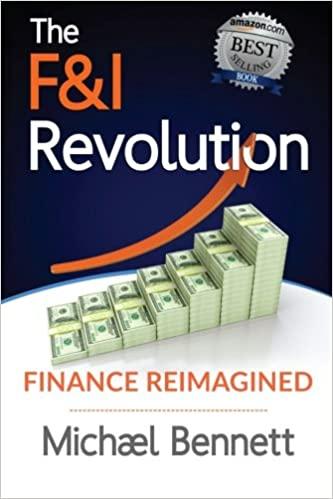Question
Stuffit Corp Stuffit Corp. is a company with net present value (NPV) in good, medium, and bad states of $500 million, $250 million, and $50
Stuffit Corp
Stuffit Corp. is a company with net present value (NPV) in good, medium, and bad states of $500 million, $250 million, and $50 million, respectively.
The firm has $60 million (face value) of perpetuity debt issued many years ago. The debt promises to pay a 2.625% annual coupon rate and currently has market value of $53.10 million. The longterm risk free rate is currently 2.5% per year.
The firm has 1 million shares of stock outstanding. Its current price is $164.72 per share.
Stuff Corp. faces a corporate tax rate equal to 20%. Moreover, bankruptcy costs equal to 40% of the pretax asset NPVs in bankruptcy states.
i) Find the state prices that are consistent with current market valuations.
The firm is considering a leveraged recapitalization. The firm would raise $105 million by issuing new debt, and use debt proceeds to buy back its own stock. Because of covenants in outstanding debt, the new debt would be subordinate to existing debt.
ii) What must be the credit spread of the new debt?
iii) How many shares can be bought back and at which price?
iv) Does the leverage recapitalization create value for shareholders? How much? Use the value decomposition seen in class to show where value comes from.
It turns out, however, that there is a problem. Maria Sardelli, Stuffit Corps CFO, carefully read the fine print of existing debt covenants and realized that they forbid sizable leverage recapitalizations such as this one.
Maria contacted Stuffit Corp.s investment bankers to inquire whether existing debtholders would be nice enough to ignore the norecap covenant as new debt would be junior to existing one. The investment bankers answered that, no, debtholders would indeed block such large leverage recapitalization. The only solution would be for the firm to buy out existing bondholders, that is, buy back all existing bonds in order to get rid of the constraints imposed by its covenants.
There is a prespecified price for such buyout because existing debt is callable, that is, the firm can buy it back from debtholders at a prespecified price. That call price of the Stuff Corp.s debt is a premium of 5% of face value. That is, they would have to pay $63 million to existing bondholders in order to retire all existing debt. The firm is then considering raising $168 million by issuing new debt, and use proceeds to retire all existing debt for $63 million and buy back $105 million of its own stock.
v) What must be the credit spread of the new debt now?
vi) Does this new version of the leverage recapitalization create value for shareholders? How much? Use the value decomposition seen in class to show where value comes from. The situation described so far assumes way issuance costs. But Stuff Corp.s investment bankers would charge a fee of $7 million to structure the new version of the leverage recapitalization.
vii) Considering the issuance cost, does this new version of the leverage recapitalization create value for shareholders?
In case the leverage recapitalization does not go through because existing debtholders are driving a hard bargain, because there are issuance costs, the firm is considering a new project that would drastically reshapes the nature of existing business.
This new project is not an investment per se but rather a dramatic reorganization/reorientation of the firms business strategy. Such reorientation does not require any net cash infusion.
Maria Sardelli, Stuffit Corps CFO, read the fine print of existing debt covenants and realized that they do not forbid such large business reorganization.
The incremental cash flows of the project across the three states is (350,240,40). In case of bankruptcy, bankruptcy costs still consume 40% of the total pretax cash flows in bankruptcy states.
viii) Is this a positive NPV project? What is the NPV?
ix) Does the project create value for shareholders? Where does the value come from?
Step by Step Solution
There are 3 Steps involved in it
Step: 1

Get Instant Access to Expert-Tailored Solutions
See step-by-step solutions with expert insights and AI powered tools for academic success
Step: 2

Step: 3

Ace Your Homework with AI
Get the answers you need in no time with our AI-driven, step-by-step assistance
Get Started


